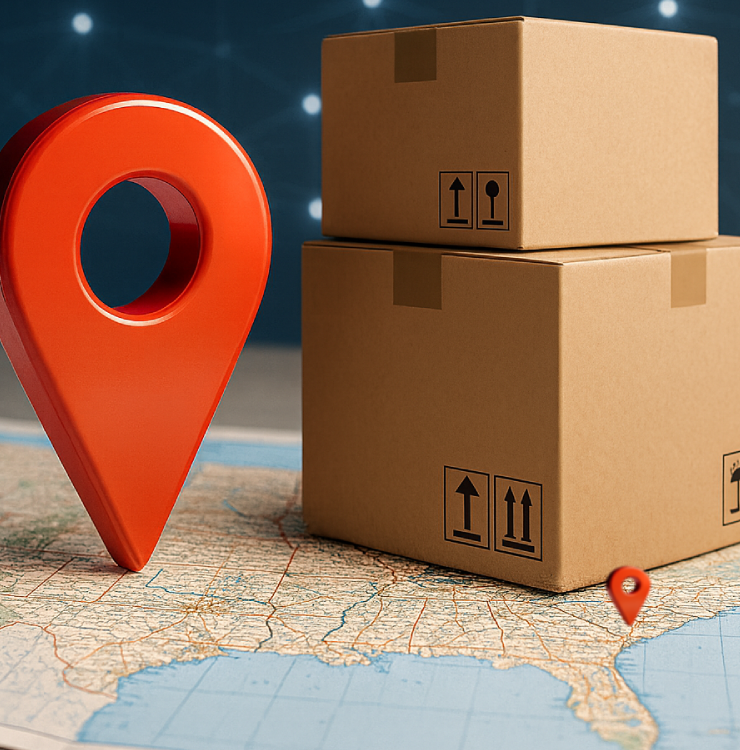
As Ops professionals, we know that Distributed Inventory Management (DIM) and Distributed Order Management (DOM) help improve ecommerce margins.
DIM helps to identify demand across multiple locations and determines optimal inventory levels, by SKU, by location.
DOM optimizes and routes orders across suppliers, locations, cartonization (packaging) options, carriers and service levels.
The net result is that the right amount of inventory is placed closer to the customer and orders then are efficiently routed to the optimal fulfillment location – cutting delivery distance, time and expense
We’ve long suspected that DIM/DOM also aids in addressing ecommerce sustainability. Cutting shipping distance should reduce the shipment’s carbon footprint.
But before now, other than back-of-envelope calculations, we couldn’t really quantify the impact that combining DIM and DOM might have on improving ecommerce sustainability.
Now, thanks to Reilly McCarthy, we can.
Reilly worked with Etail Solutions to attempt to quantify the effect of not having inventory in the ideal location on the delivery’s last-mile carbon impact. Reilly, then a senior in Penn State’s supply chain and information systems program, studied the impact of inventory management on sustainability as part of his senior thesis.
Reilly used data provided by a large Etail customer using Etail's Ideal Order Technology. Ideal Order helps Etail customers improve margins by comparing the cost of how orders were actually fulfilled compared to the cost of how they should have been fulfilled if all conditions – including inventory placement – had been “ideal”.
The Ideal Order analysis includes actual shipping cost and distance compared to the “ideal” cost and distance if inventory had been placed at the optimal location. Calculating the difference in shipping cost and distance helps quantify the margin and sustainability impact of different inventory placement strategies.
Reilly’s research investigated potential emission savings from optimal inventory placement, simplified ways to portray emission metrics, and estimated the financial savings related to transportation with ideal inventory placement.
He found that there was the potential for the customer to cut a whopping 35.5 percent of their total emissions from last-mile transportation by using ideal inventory placement.
Plus, ideal inventory placement could have resulted in $5.6 million of annual shipping savings due to lower tractor trailer and last mile delivery van fuel and labor costs. That's an incredible bottom-line savings for the customer and an immense reduction in carbon impact on the environment – a win-win.
If you’re in ecommerce operations, chances are you’ve been asked to quantify the effects of ecommerce fulfillment on your company’s sustainability goals. Reilly’s thesis offers some interesting approaches. Entitled “Modelling the Carbon Footprint of Non-Optimal Ecommerce Last Mile Distribution”, it’s available for download from Penn State’s University Library.
And congratulations to Reilly, who graduated with honors and is off to his first full-time position in what we are sure will be a great career in supply chain and information management.
Additional resources
PLATFORM OVERVIEWS
Distributed Inventory Management
WHITE PAPERS
Ecommerce Sustainability: The Complete Guide to Sustainable Ecommerce Fulfillment
Distributed Order Management Solutions Overview
BLOG POSTS
Ecommerce Sustainability by the Numbers
Sustainable Ecommerce Fulfillment
What is Distributed Order Management
Nine Non-Obvious Advantages of Distributed Order Management
Choosing the Best Distributed Order Management System
Best Practices in Distributed Order Management
Distributed Order Management Software: Best Practices and What to Consider
Maximizing Customer Satisfaction with Distributed Order Management
Optimize Fulfillment with Distributed Order Management




